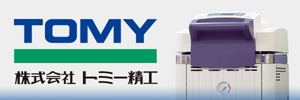OA-28 (JTK0036):Responses of coastal microbial communities to monomeric and polymeric chemical compounds
The University of Tokyo
Molecular techniques have revealed that the community of marine microbes is usually composed of relatively few “majorities” appear large individuals and huge “minorities” appear few in one sample. But, it is still not clear which groups play what kind of roles, and how such roles lead to the establishment of certain community structure. Organic matter in the ocean is basically a mixture of high (or polymer) and low (or monomer) molecular weight compounds. The polymers have to be hydrolyzed to monomers prior to take up by microbes. Here we hypothesized that microbial responds to monomers and polymers is different and the difference can be one factor to control the community structure. Also, it is hypothesized that monomers are quickly used and sustain high microbial biomass, whereas polymers are slowly degraded by certain group with minimum increase of biomass. To verify the hypotheses, we conducted seawater culture experiments with amendment of monomers (glucose, N-acetyle glucosamine, glutamic acid) and their corresponding polymers (starch, chitin and bovine serum albumin). Coastal waters were collected at Oarai, Ibaraki, Japan and the biomass and community structure during course of incubation were followed. The growth pattern differed with the compounds added; for monomers marked increases were noticed after 24 or 36 hours and for polymers, significant growth was confirmed after 36, 96 and 72 hours for starch, chitin and BSA respectively. The community structures of microorganisms in each culture were obtained using 454 pyrosequencing and found all the monomers as well as starch supported the class Gammaproteobacteria, of which in monomers Vibrionales and in starch Alteromonadales were dominant; suggesting the formers are quick reactor and users of monomers while the latters are potential degraders. Chitin and BSA showed slower rate of growth but found dominancy by Alphaproteobacteria after 96 hours, seems they follow “slow and steady wins the race” strategy.
keywords:Chemical Compounds, Bacterial Community, NGS, Coastal Ecosystem




